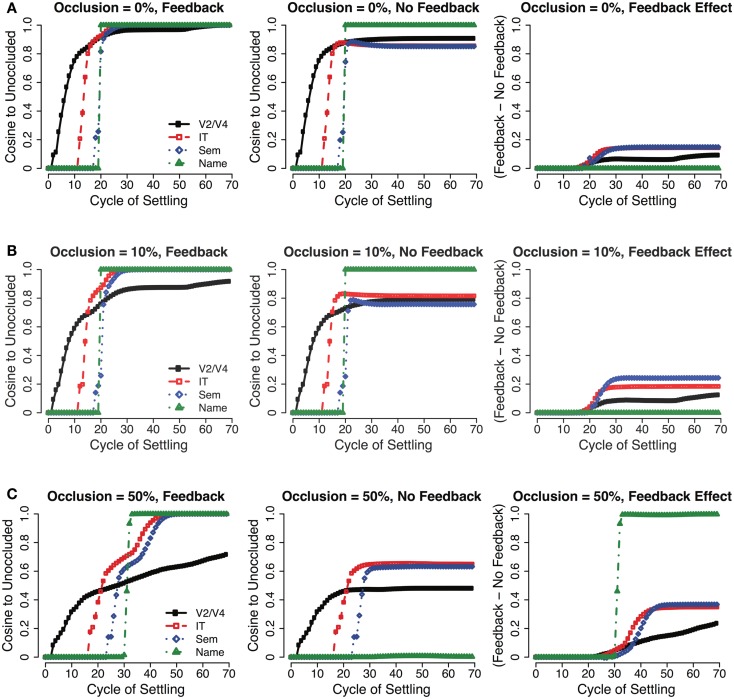Figure 4.
Recurrent interactions between adjacent layers during cycles of updating for 0, 10, and 50% occlusion cases of an object. By computing the cosine of the activity pattern for each layer compared to what would be expected when processing an unoccluded object, the network interactions that give rise to the named output can be observed. (A,B) When inputs are relatively unambiguous, the network converges rapidly with only a short latency between the first IT responses and activation of the correct output (ca. 10 cycles). (C) The correct output can still be resolved when inputs are highly ambiguous, but only after considerable recurrent interactions between layers that serve to fill in missing information reinforce the overall network state. In this case, the latency between the first IT responses and activation of the correct output is longer (ca. 15 cycles), in accordance with the recurrent interactions between layers, which take time to stabilize. Also note that the V2/V4 state does not fully complete, but the IT and Semantics patterns are identical to the unoccluded case, indicating that the higher-levels of the network complete, while the lower-levels do not (“amodal completion”). Recurrent excitatory feedback plays a critical role in this completion effect, as is shown in comparison with a network having no top-down feedback weights – this effect is more apparent with higher-levels of occlusion.

